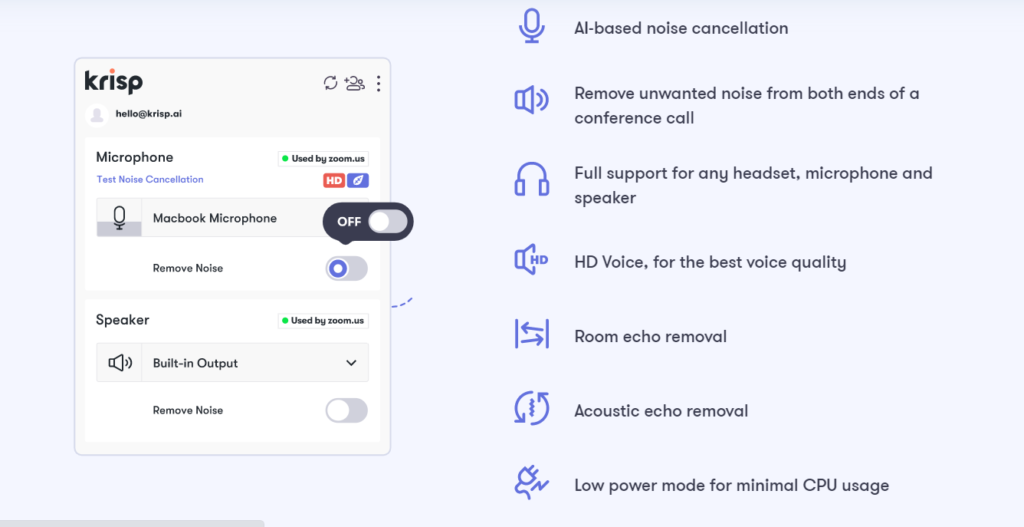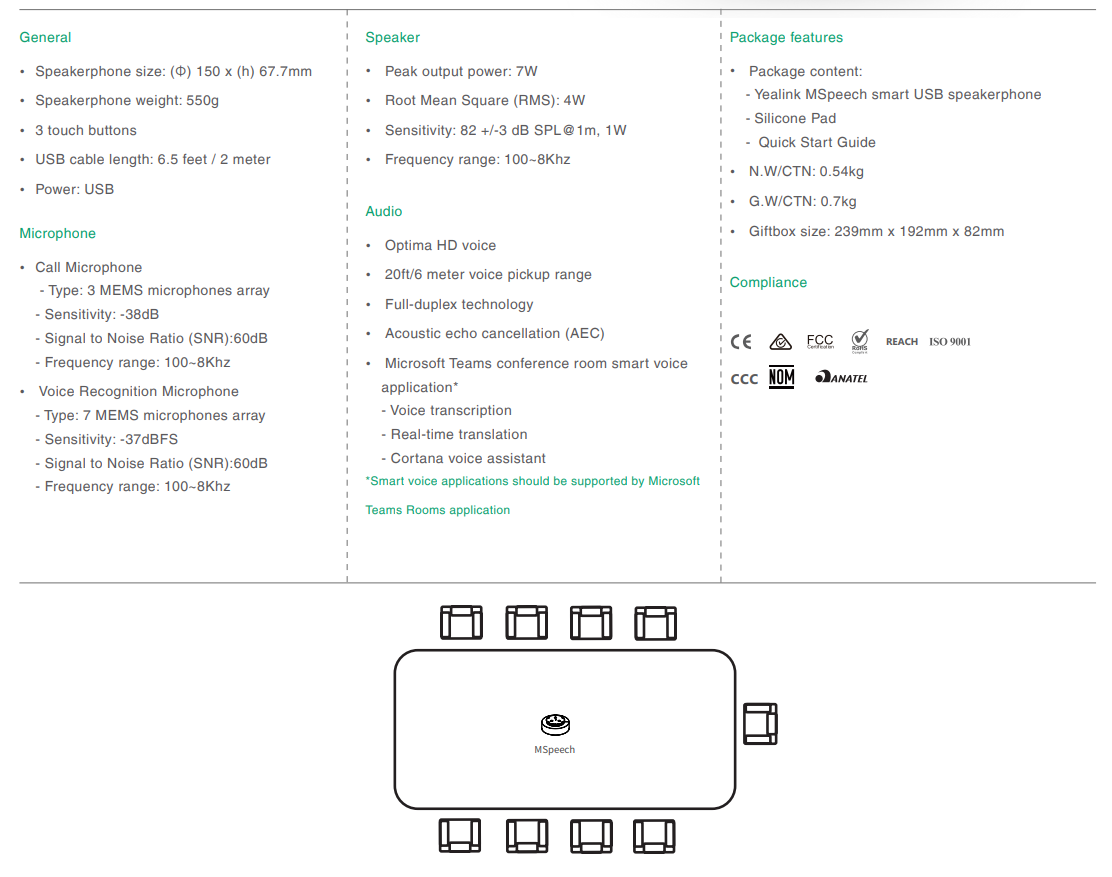

- Acoustic echo cancellation usb mic update#
- Acoustic echo cancellation usb mic full#
- Acoustic echo cancellation usb mic software#
- Acoustic echo cancellation usb mic plus#
Connect the hardware codec audio input to the P300 analog output 1. 
In the matrix mixer, this is labeled Analog - From Codec.
Connect the hardware codec audio output to the P300 analog input 1. Place a test call to make sure AEC is working properly.ĪNIUSB-MATRIX only: Designer's Optimize workflow automatically sets the USB device type. After changing the USB device type, select your device as the default audio device in the codec’s settings. Echo-canceling speakerphone: For using the Shure device’s AEC. Speakerphone: For using the codec’s AEC. In Designer, find the P300 or ANIUSB-MATRIX and go to Settings > General. Set the USB device type to Echo-canceling speakerphone to tell the codec to turn off its AEC. The codec can then turn on or turn off its own AEC (if supported).įor example: You have an MXA710 routed to an ANIUSB-MATRIX and want to use the MXA710's AEC. The USB device type setting tells the codec if acoustic echo cancellation (AEC) is needed or not. When you use a USB-connected codec with a P300 or ANIUSB-MATRIX, you may need to set the USB device type on the Shure device. Acoustic echo cancellation usb mic full#
You can access basic settings for the device by opening it from the Shure Web Device Discovery tool, but you must use Designer for full control. Acoustic echo cancellation usb mic software#
With firmware 4.x and newer, Shure Designer software is the only way to control the P300.
Acoustic echo cancellation usb mic update#
Firmware 4.x and newer has improved audio encryption, so make sure to update all Shure devices using encryption to the same major firmware version. You can now add the P300 to domains in Dante Domain Manager software. These options add flexibility for reinforcement, voice lift, speaker zoning, and other applications.  Choose where the microphone signals going to the matrix mixer come from: pre- or post-processing, and pre- or post-automixer gating. With 4.x firmware, the P300 has 10 Dante inputs and 8 Dante outputs for increased flexibility. If you remove or add devices, select Optimize again. Designer optimizes microphone and DSP settings for your equipment combination. Verifying that AEC reference signals are correctly routed. You can customize settings further, but the Optimize workflow gives you a good starting point.Īfter optimizing a room, you should check and adjust settings to fit your needs. The settings are optimized for your particular combination of devices. Enables LED logic control for applicable devices. Creates audio routes and mute control routes. When you select Optimize in a room, Designer does the following: Optimize also creates mute control routes in rooms with MXA network mute buttons. Note: The input and output LEDs stay off when metering is set to Post-gain and the channel is muted.ĭesigner's Optimize workflow speeds up the process of connecting systems with at least 1 microphone and 1 audio processor. Tri-color LEDs indicate the audio signal level for the analog channels. Note: Error details are available in the Event Log. Problem detected with connected USB audio device Encryption is enabled on one device and not on another.
Choose where the microphone signals going to the matrix mixer come from: pre- or post-processing, and pre- or post-automixer gating. With 4.x firmware, the P300 has 10 Dante inputs and 8 Dante outputs for increased flexibility. If you remove or add devices, select Optimize again. Designer optimizes microphone and DSP settings for your equipment combination. Verifying that AEC reference signals are correctly routed. You can customize settings further, but the Optimize workflow gives you a good starting point.Īfter optimizing a room, you should check and adjust settings to fit your needs. The settings are optimized for your particular combination of devices. Enables LED logic control for applicable devices. Creates audio routes and mute control routes. When you select Optimize in a room, Designer does the following: Optimize also creates mute control routes in rooms with MXA network mute buttons. Note: The input and output LEDs stay off when metering is set to Post-gain and the channel is muted.ĭesigner's Optimize workflow speeds up the process of connecting systems with at least 1 microphone and 1 audio processor. Tri-color LEDs indicate the audio signal level for the analog channels. Note: Error details are available in the Event Log. Problem detected with connected USB audio device Encryption is enabled on one device and not on another. 
Network Audio: Dante audio present on the network Network Audio LED Behavior LED StatusĮrror has occurred. Note: Use a PoE+ injector if your network switch does not supply PoE+.
Acoustic echo cancellation usb mic plus#
Power: Power over Ethernet Plus (PoE+) present Resets the device settings back to the factory default. Use the matrix mixer to sum any combination of signals from the P300 into a single mono channel and send through the USB output.Ĭonnects to a network switch to connect Dante audio, Power over Ethernet (PoE), and data from the control software. Set the output level to match the input sensitivity of the analog device (Line, Aux, or Mic level).Ĭonnects to a computer to send and receive audio signals. Provides an optional connection for microphone shield wire to chassis ground.īalanced audio output connects to an analog device. Set the analog input level to match the output level of the analog device. Note: Left and Right audio signals are summed to a mono signal.īalanced audio input connects to an analog audio device. Note: See the cable requirements for additional information. Supports bidirectional audio with a TRRS cable, or sends audio into the P300 with a TRS cable. TRRS mobile input connects to a mobile device.








 0 kommentar(er)
0 kommentar(er)
